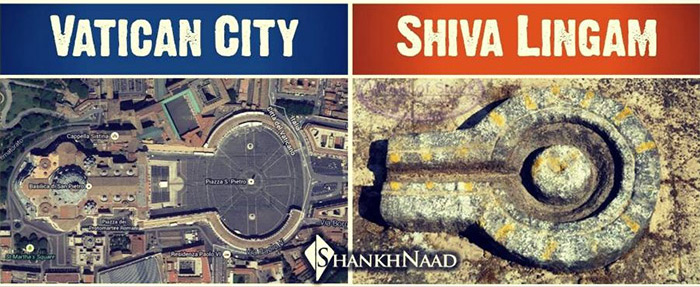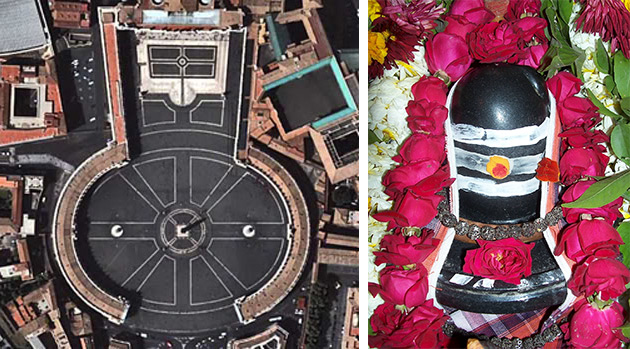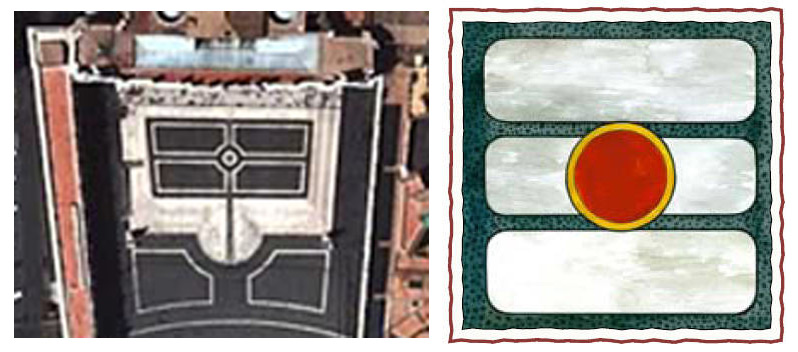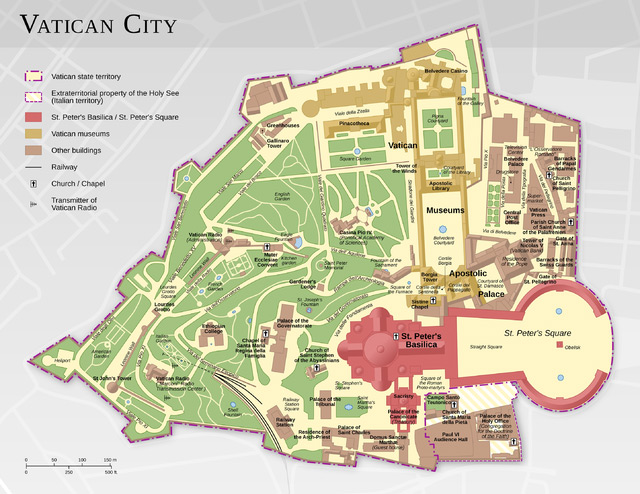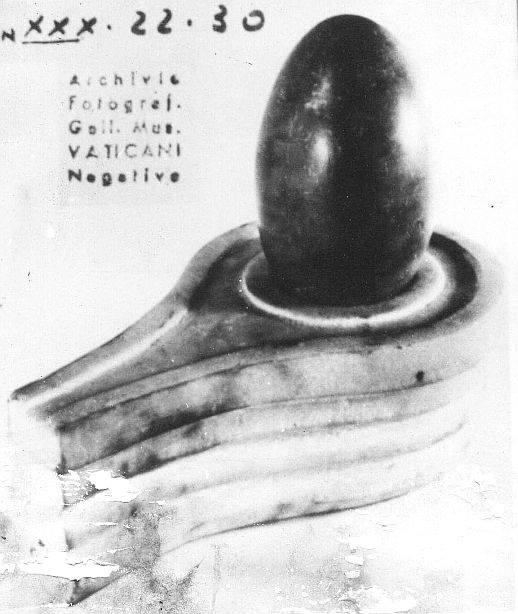ASHTALAKSHMI Kovil is a Hindu temple, which lies on the shorelines near the Elliot's beach, in Chennai, India.
The temple is dedicated to the goddess Lakshmi, and her eight primary forms – the Ashtalakshmi – the giver of all eight forms of wealth, namely, offspring, success, prosperity, wealth, courage, bravery, food, and knowledge.
The temple was constructed on the wishes of Sri Chandrashekarendra Saraswati swamigal of Kanchi Mutt. The foundation was land in January 1974 by public participation. The consecration of the temple took place on 5 April 1976 in the presence of the 44th guru of the Ahobila Mutt Vedhantha Dhesika Yatheendhra Mahadhesikan Swami.
History...................
The Vedas and Puranas say that Goddess Lakshmi has emerged out of the oceans when the Devas and Asuras churned the Milky Ocean. Mahavishnu married Her and They both fulfill the desires of the devotees. Goddess Lakshmi is the deity who grants the Eightfold Achievements (Ashtama Siddhis) and Eightfold Wealth( Ashta Iswaryam). As both Mahavishnu and Mahalakshmi(with Her eight forms) reside in this temple it is known as the Ashtalakshmi Temple. It is befitting to have a temple constructed and consecrated on the shores facing the sea for Goddess Lakshmi whose birthplace is the sea. Ashtalakshmi Temple Chennai Ashtalakshmi Temple
Temple :
Omkhara (AUM) Shape: The temple was designed and constructed in the shape of ‘AUM’,the First Vedic Mantra, Pranava.
Ashtanga Vimana: As the temple is dedicated to Mahavishnu and Ashta Lakshmis, the construction is on the models of Ashtanga vimana (Eight Parts) style. This is one of the very ancient styles of temple construction.
This temple has three floors,the Ground floor,the First floor and the Second floor and steps to each floor.This three tier system is the speciality of the ashtanga vimana style.The three forms of Lord Vishnu – Standing,Sitting and Reclining –are depicted in each floor. In the ground floor Mahavishnu and Mahalakshmi are in the standing posture.In the four corners of each of the other two tires are the shrines for the AshtaLakshmi.
Generally, temples are built on the basic six principles :
Adishtanam (Stationary Place -abode)
Paadam (Feet –pedastal)
Prastaram(Walls)
Khandam(Neck)
Sikaram(Head)
Stupi(Copula -tower)
This is known as Sashtangam (Six Parts or Divisions).
In Ashtangavimanam, on Khandam, another floor is constructed with Prastaram (Walls), Khandam (neck),Sikaram(head) and Stupi(tower).
In this temple, below the Stupi,in the Sikaram area, is consecrated the Dhanalakshmi.
On the Precincts, are the other shrines for Gajalashmi, Santhanalashmi, Vijayalakshmi and Vidyalakshmi in the Khandam areas.
On the Groundfloor, in the Prastara area,are consecrated the three Lakshmis – Adi Lakshmi,Dhanya Lakshmi and Dhairya Lakshmi.
In the main Sanctum Sanctorum is consecrated the deity of Mahalakshmi with Mahavishnu, as the presiding deity of the Temple.
Under one Vimanam (Turret) , eight shrines are constructed sideways and above on the two tiers.
There is a sannadhi for the 10 incarnations of Lord Vishnu, to the left of which is the Madapalli (the kitchen for preparing naivedhiyam for the Gods).
There are shrines for Tumbikai Aazhwar (Ganesha), Guruvaayurappan, Chakrathaazhwar & Narasimhar (on either side of the same idol), Aanjaneyar & Dhanvantri.
Nature of worship
The worship starts with the shrine of the two presiding deities namely Mahalakshmi and Mahavishnu, which is located on the second floor.
After the prayers are offered here, a flight of steps take you to the third floor where the shrine of Santhanalakshmi (bestower of children) is located. The shrines of Vidyalakshmi (goddess of wisdom and knowledge), Vijayalakshmi (god of success) and Gajalakshmi (goddess of prosperity) are also here. After completing worship here, you have to take another flight of stairs to go the fourth floor where the shrine of DhanaLakshmi (goddess of wealth) is located.
While exiting the temple, you have to pray before the shrines of Adhilakshmi, DhaanyaLakshmi (goddess of food) and Dhariyalakshmi (goddess of courage and strength).
|| AshTalakShmee stotram ||
Aadi lakshmee
sumanasa vandita sundaree maadhavee
chandra sahodaree hemamayay |
munigaNa manDita moksha pradaayinee
manjula bhaashiNee vedanutay ||
pankaja vaasinee deva supoojita
sadguNa varshiNee shaantiyutay |
jaya jaya hay madhusoodana kaaminee
aadi lakshmee sadaa paalaya maam || 1 ||
Dhaanya lakshmee
ayi kalikalmasha naashinee kaaminee
vaidika roopiNee vedamayay |
ksheera samudbhava mangala roopiNee
mantra nivaasinee mantranutay ||
mangala daayinee ambuja vaasinee
devagaNaashrita paadayutay |
jaya jaya hay madhusoodana kaaminee
dhaanya lakshmee sadaa paalaya maam || 2 ||
Dhairya lakshmee
jayavara varNinee vaishNavee bhaargavee
mantra svaroopiNi mantramayay |
sura gaNa poojita sheeghra phalaprada
gyaana vikaasinee shaastranutay ||
bhava bhaya haariNi papa vimochanee
saadhu janaashrita paadayutay |
jaya jaya hay madhusoodana kaaminee
dhairya lakshmee sadaa paalaya maam || 3 ||
Gaja lakshmee
jaya jaya durgati naashinee kaaminee
sarva phalaprada shaastramayay |
rathagaja turaga padaadi samaavruta
parijanamanDita lokanutay ||
harihara brahma supoojita sevita
taapa nivaariNee paadayutay |
jaya jaya hay madhusoodana kaaminee
gaja lakshmee roopeNa paalaya maam || 4 ||
Santaana lakshmee
ayi khaga vaahinee mohinee chakriNee
raaga vivardhinee gyaanamayay |
guNagaNa vaaridhee loka hitaishiNee
svarasapta bhooshita gaananutay ||
sakala suraasura deva muneeshvara
maanava vandita paadayutay |
jaya jaya hay madhusoodana kaaminee
santaana lakshmee sadaa paalaya maam || 5 ||
Vijaya lakshmee
jaya kamalaasanee sadgati daayinee
gyaana vikaasini gaanamayay |
anudinam archita kumkuma dhoosara
bhooshita vaasita vaadyanutay ||
kanaka dharaastuti vaibhava vandita
shankara deshika maanya paday |
jaya jaya hay madhusoodana kaaminee
vijaya lakshmee sadaa paalaya maam || 6 ||
Vidyaa lakshmee
praNata sureshvaree bhaaratee bhaargavee
shoka vinaashinee ratnamayay |
maNimaya bhooshita karma vibhooshaNa
shaanti samaavruta haasya mukhay ||
navanidhi daayinee kalimala haariNee
kaamita phala prada hasta yutay |
jaya jaya hay madhusoodana kaaminee
vidyaa lakshmee sadaa paalaya maam || 7 ||
Dhana lakshmee
dhimi dhimi dhindhimi dhindhimi dhindhimi
dundubhi naada supoorNamayay |
ghuma ghuma ghumghuma ghumghuma
ghumghuma shankha ninaada suvaadyanutay ||
veda puraaNetihaasa supoojita
vaidika maarga pradarshayutay |
jaya jaya hay madhusoodana kaaminee
dhana lakshmee roopeNa paalaya maam|| 8 ||



